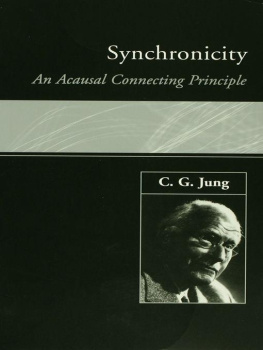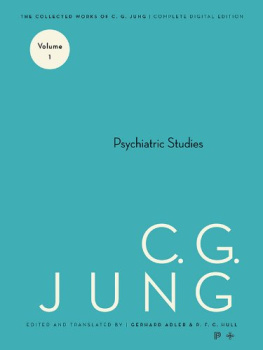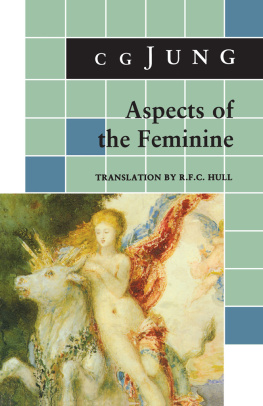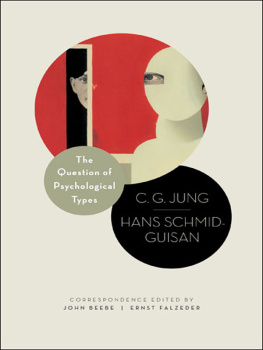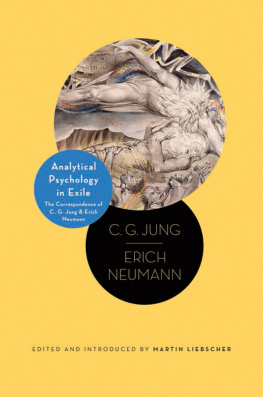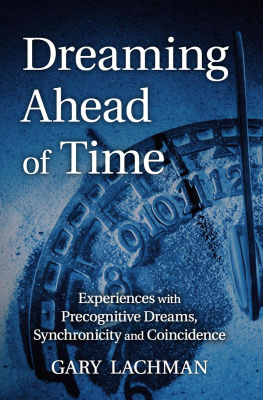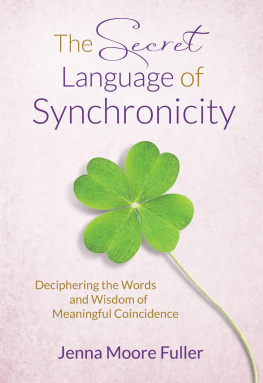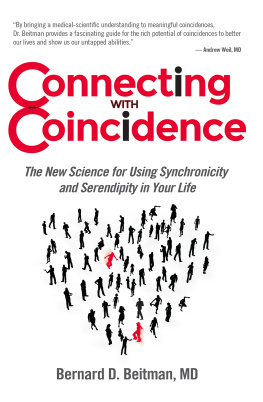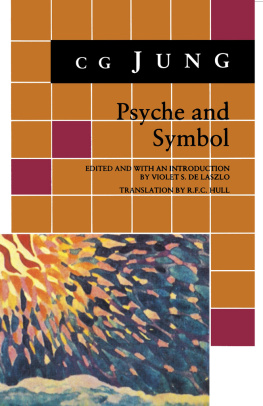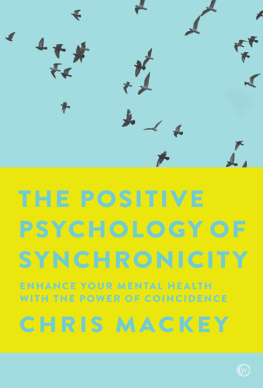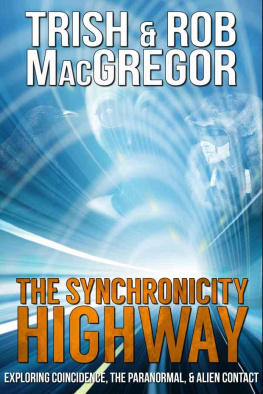C. G. Jung - Synchronicity: An Acausal Connecting Principle
Here you can read online C. G. Jung - Synchronicity: An Acausal Connecting Principle full text of the book (entire story) in english for free. Download pdf and epub, get meaning, cover and reviews about this ebook. year: 2013, publisher: Routledge, genre: Religion. Description of the work, (preface) as well as reviews are available. Best literature library LitArk.com created for fans of good reading and offers a wide selection of genres:
Romance novel
Science fiction
Adventure
Detective
Science
History
Home and family
Prose
Art
Politics
Computer
Non-fiction
Religion
Business
Children
Humor
Choose a favorite category and find really read worthwhile books. Enjoy immersion in the world of imagination, feel the emotions of the characters or learn something new for yourself, make an fascinating discovery.
Synchronicity: An Acausal Connecting Principle: summary, description and annotation
We offer to read an annotation, description, summary or preface (depends on what the author of the book "Synchronicity: An Acausal Connecting Principle" wrote himself). If you haven't found the necessary information about the book — write in the comments, we will try to find it.
Synchronicity: An Acausal Connecting Principle — read online for free the complete book (whole text) full work
Below is the text of the book, divided by pages. System saving the place of the last page read, allows you to conveniently read the book "Synchronicity: An Acausal Connecting Principle" online for free, without having to search again every time where you left off. Put a bookmark, and you can go to the page where you finished reading at any time.
Font size:
Interval:
Bookmark:
To Jung, synchronicity is a meaningful coincidence in time , a psychic factor which is independent of space and time. This revolutionary concept of synchronicity both challenges and complements the physicists classical view of causality. It also forces us to a basic reconsideration of the meaning of change, probability, coincidence and the singular events in our lives.
Jung draws on his world-famous work as a psychiatrist to examine the principle of synchronicity and arrives at far-reaching conclusions as to its nature. He analyses the psychology of synchronicity, discusses the forerunners of the concept, and studies in detail the effectiveness of astrology in predicting the future.

First published in England in 1955
ARK Edition 1985
Reprinted in 1987
Reprinted in 1991, 1995, 1999,
2003, 2004 and 2006
by Routledge
27 Church Road, Hove, East Sussex, BN3 2FA
270 Madison Avenue, New York NY 10016
Routledge is an imprint of the Taylor & Francis Group
Printed and bound in the UK
by Biddles Ltd, King's Lynn, Norfolk
This publication has been produced with paper manufactured to
strict environmental standards and with pulp derived from
sustainable forests.
Originally published in Germany as Naturerklarung und Psyche
(studien aus dem C. G. Jung-Institut, IV)
by Rascher verlag, Zurich, 1952
No part of this book may be reproduced in
any form without permission from the publisher,
except for the quotation of brief passages
in criticism
ISBN 0-415-13649-0
THE PUBLISHERS wish to express gratitude for permission to quote, as follows: to the Harvard University Press and William Heinemann, Ltd., London, for a passage from the Loeb Classical Library edition of Philo; to E. P. Dutton and Co., New York, and J. M. Dent and Sons, Ltd., London, for quotations from Leibniz: Philosophical Writings , in Everymans Library; to Houghton, Mifflin Co., Boston, and Allen and Unwin, Ltd., London, for passages from Arthur Waleys The Way and Its Power ; and to Zeno publishers, London, for a passage from John Precopes edition of Hippocrates.
THIS VERSION has been prepared with the editorial collaboration of the Editors of the Collected Works of C. G. Jung. It forms part of the contents of Volume 8 of the Collected Works, The Structure and Dynamics of the Psyche . Part of the material originally was presented as a brief essay, Uber Synchronizitt, in Eranos-Jahrbuch 1951 .
I WANT to express my thanks to the following persons for their help and advice: Professor Max Knoll, for assistance with certain technical terminology; Professor Erwin Panofsky, for translating passages from Kepler; Dr. Marie-Louise von Franz, for translating passages from Latin and Greek; Norbert Guterman, for assistance with a passage from Paracelsus; A. S. B. Glover, for bibliographical and other valuable advice; Miss Barbara Hannah, for her meticulous work on the typescript; and Professor Jung himself, for reviewing and correcting the typescript and proof and patiently answering a multitude of queries.
In writing this paper I have, so to speak, made good a promise which for many years I lacked the courage to fulfil. The difficulties of the problem and its presentation seemed to me too great; too great the intellectual responsibility without which such a subject cannot be tackled; too inadequate, in the long run, my scientific training. If I have now conquered my hesitation and at last come to grips with my theme, it is chiefly because my experiences of the phenomenon of synchronicity have multiplied themselves over the decades, while on the other hand my researches into the history of symbols, and of the fish symbol in particular, brought the problem ever closer to me, and finally because I have been alluding to the existence of this phenomenon on and off in my writings for twenty years without discussing it any further. I would like to put a temporary end to this unsatisfactory state of affairs by trying to give a consistent account of everything I have to say on this subject. I hope it will not be construed as presumption on my part if I make uncommon demands on the open-mindedness and goodwill of the reader. Not only is he expected to plunge into regions of human experience which are dark, dubious, and hedged about with prejudice, but the intellectual difficulties are such as the treatment and elucidation of so abstract a subject must inevitably entail. As anyone can see for himself after reading a few pages, there can be no question of a complete description and explanation of these complicated phenomena, but only an attempt to broach the problem in such a way as to reveal some of its manifold aspects and connections, and to open up a very obscure field which is philosophically of the greatest importance. As a psychiatrist and psychotherapist I have often come up against the phenomena in question and could convince myself how much these inner experiences meant to my patients. In most cases they were things which people do not talk about for fear of exposing themselves to thoughtless ridicule. I was amazed to see how many people have had experiences of this kind and how carefully the secret was guarded. So my interest in this problem has a human as well as a scientific foundation.
In the performance of my work I had the support of a number of friends who are mentioned in the text. Here I would like to express my particular thanks to Dr. Liliane Frey-Rohn, for her help with the astrological material.
C. G. JUNG
August, 1950
The discoveries of modern physics have, as we know, brought about a significant change in our scientific picture of the world, in that they have shattered the absolute validity of natural law and made it relative. Natural laws are statistical truths, which means that they are completely valid only when we are dealing with rnacrophysical quantities. In the realm of very small quantities prediction becomes uncertain, if not impossible, because very small quantities no longer behave in accordance with the known natural laws.
The philosophical principle that underlies our conception of natural law is causality . But if the connection between cause and effect turns out to be only statistically valid and only relatively true, then the causal principle is only of relative use for explaining natural processes and therefore presupposes the existence of one or more other factors which would be necessary for an explanation. This is as much as to say that the connection of events may in certain circumstances be other than causal, and requires another principle of explanation.
We shall naturally look round in vain in the macrophysical world for acausal events, for the simple reason that we cannot imagine events that are connected non-causally and are capable of a non-causal explanation. But that does not mean that such events do not exist. Their existenceor at least their possibilityfollows logically from the premise of statistical truth.
The experimental method of inquiry aims at establishing regular events which can be repeated. Consequently, unique or rare events are ruled out of account. Moreover, the experiment imposes limiting conditions on nature, for its aim is to force her to give answers to questions devised by man. Every answer of nature is therefore more or less influenced by the kind of questions asked, and the result is always a hybrid product. The so-called scientific view of the world
Font size:
Interval:
Bookmark:
Similar books «Synchronicity: An Acausal Connecting Principle»
Look at similar books to Synchronicity: An Acausal Connecting Principle. We have selected literature similar in name and meaning in the hope of providing readers with more options to find new, interesting, not yet read works.
Discussion, reviews of the book Synchronicity: An Acausal Connecting Principle and just readers' own opinions. Leave your comments, write what you think about the work, its meaning or the main characters. Specify what exactly you liked and what you didn't like, and why you think so.

